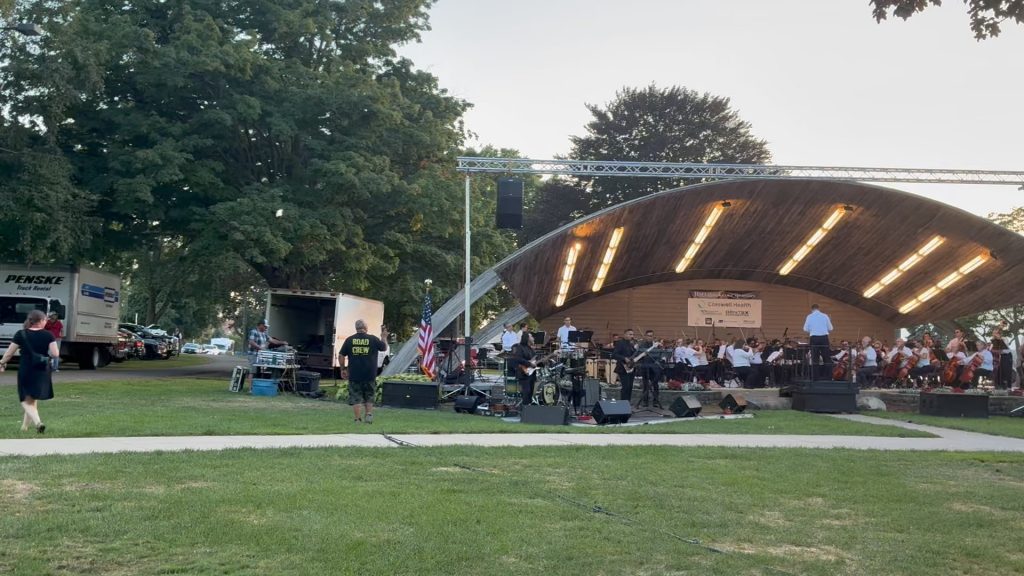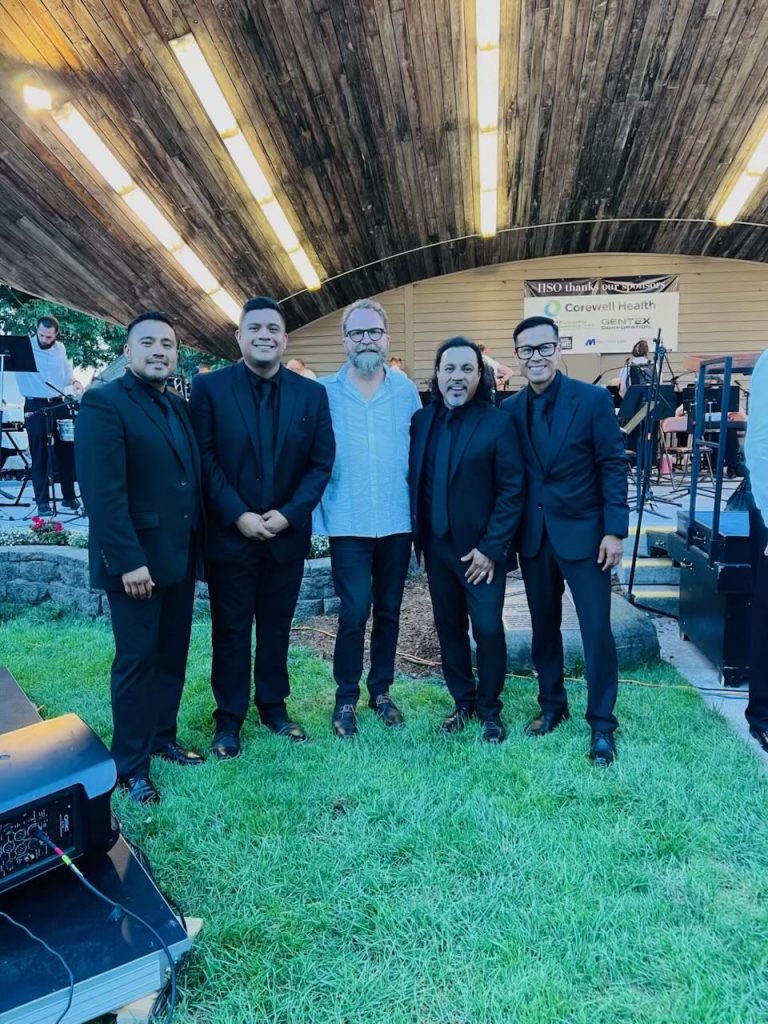It’s so much fun to work with friends! In this case, my friend Carlos Colón commissioned me to write an arrangement of “Mary’s Song,” a song written by another friend, Wendell Kimbrough. This beautiful performance was recorded at a rehearsal for a chapel service at Baylor University.
Category: Arrangement
Holy Is Your Name
The Canticle of Mary (the Magnificat, Luke 1:46-55) is one of the most beautiful prayers in the Bible. It has elements of meekness, joy, obedience, wonder, and even some revolutionary overtones. It is no surprise that every music setting brings out different aspects of the text.

This anonymous text and Scottish folk tune pair beautifully to show a young girl whose hope has been steeped in the prophecies long enough that she believes the angel’s surprising message.
This arrangement for voice, guitar, and strings was written for a service at Rosewood Church that focused on Mary. With a melody this lovely and honest, the best thing you can do is avoid gilding the lily. Hence, a simple arrangement that swells at each chorus and remains understated during the verses.
I will soon write a piano accompaniment and make it available at my website.
It Came Upon a Midnight Clear
Just in time for Christmas 2025 is a brand new arrangement of “It Came Upon a Midnight Clear.”
First, a disclaimer: this recording is very rough, recorded live in worship after an hour-long rehearsal, direct from the soundboard.

Some songs are blank canvases on which one can paint their own personality. Not so, this carol. The melody dips in and out of a chromatic backdrop, establishing certain non-negotiables for the arranger. And yet, the song is marked by its quiet simplicity. I wanted to retain that serenity in my arrangement.
This arrangement was written for the All Saints Orchestra (guitar and string quintet), but I later added a piano part for churches with more standard instrumentation.
HSU MUU: Inevitable Adiós
The final arrangement for the Holland Symphony Orchestra’s “Music Unites Us” concert with Grupo Super Nova was a ballad called “Inevitable Adiós.” It is gorgeous and heartbreaking.
When Christian, the songwriter, first sent me this, I responded, “I don’t understand half of the Spanish, and I was still getting choked up!” With a song like this, the best thing to do is just stay out of the way. Let the song speak for itself; simply support and enhance what is already in the music. I did that with lush lower strings, regal horns, soaring violin lines, harp, and lots of cymbal rolls.
Of course, I needed to let the orchestra come to the foreground at some point. I did this with an oboe solo, a flugelhorn solo, and a trumpet/trombone duet. Just enough of a break to leave us wanting more.
I’m usually not one for modulations. They are so often used as a cheap way of inflating energy back into a mediocre song that I normally stay clear of them. But I made an exception here. I let the song wind down as if it were ending, but instead of the quiet tag of “Inevitable adiós” that we expect–BAM!–a sudden modulation into a new key with full orchestra. It’s glorious, if I don’t say so myself.
Below is video of me accompanying Christian on guitar at the concert.
HSO MUU: Escucha
The next arrangement for Grupo Super Nova and the Holland Symphony Orchestra was “Escucha.” This song, too, is in an upbeat Cumbia dance style, but the lyrics are poignant: “Listen! I want you to pay attention, just in case today is our last day together: I love you like I have never loved before.”
This arrangement is further outside the box than the others. I ask the violins to strum their instruments like ukeleles and play a melody on one string with one finger (to match the portamento of the synth line). Later is a duet between electric guitar and electric violin. Then I ask the orchestra to sing background vocals. All of these stretch the musicians out of their comfort zones, but since we had worked together previously, I decided there was enough trust for them to try these unusual effects with a minimum of grumbling.
One of my favorite sections is when all the motion stops and Hector sings a quiet refrain in English. I didn’t want the English-speaking audience to miss the poignant message of the lyrics. Too, a short silence makes what follows sound even more energetic.
I should make a note about how I created these demos. I use Dorico for my notation software. To make a demo of the arrangement, I play Dorico through orchestral playback software called NotePerformer. NP is unique in that it interprets the score as orchestral musicians would play it, with articulations, blend, and reverb as they would happen in an actual performance. (Who says AI is bad?) From there, I load my orchestral arrangement and Grupo’s original recording into Logic Pro. After a bit of tempo matching and splicing I can produce a decent demo of how the final performance might sound. This is really important when trying to get buy in from both note-readers and ear-performers. It allowed everyone walk into rehearsal with a very good idea of how it would sound.
Below are a few snippets of video from the concert. There aren’t a lot of composers who can say people dance to their orchestrations!

I recently wrote three new arrangements for the Holland Symphony Orchestra’s “Music Unites Us” concert on August 9, 2025. In this outdoor concert, Grupo Super Nova, a Mexican Cumbia group from Holland, performed their original songs with the orchestra. My next three posts will be the arrangements from that concert.

The original “Lo mejor” (link below) keeps up a mid-tempo dance groove throughout. In each of these songs, I was looking for ways to create a dialogue between band and orchestra, rather than keeping the orchestra in a purely accompaniment role. So, on this song, I decided to begin with an extended, dramatic introduction before it kicked into its dance groove. Once the beat drops, the orchestra plays an accompaniment role, until…
Surprise! It’s a tuba solo. In the Mexican Banda style, tubas play a prominent role. I decided to tip my hat to that tradition by starting the mid-song breakdown with a tuba solo. Then comes a long build, beginning with the violin, moving through the strings, and then joined by all the bass instruments. After a quick recap of the chorus, the song concludes.
Sadly, I didn’t get a good video recording of the event. You will have to be satisfied with a demo of an early draft of the score. Email me if you’d like to take a look at the score.
I haven’t posted to my blog in a month, but that doesn’t mean I’ve been slacking off. No, indeed! I’ve been working on some big commissioned projects and soon-to-be-released albums. But here’s a recent arrangement I can share with you.

My good friend Carlos Colón wrote a beautiful song based on St. Athanasius’ On the Incarnation, called “Prince of Peace.” He asked me to write strings to go with the choral anthem and then he recorded it with a group of exceptional musicians.
Most of the time, I follow my own artistic impulses, but it is really satisfying to help someone else achieve their musical vision–especially when it turns out so beautifully!
You can request the score at Carlos’ website.
A friend sent me this lovely Chinese communion song and a literal translation by a missionary/translator. There is no better way to procrastinate than to translate, arrange, and record a new global hymn, so I set to work!
The key to translating a song is to get the spirit of the song, rather than just the words. Is the song highbrow or heartfelt? What is the rhyme scheme in the original language–or is there one? Is the music simple or complicated? All these questions come into play when “transplanting” a song from one culture to another.
“One with the Lord” is a simple chorus with no surprises or sophisticated nuances. And yet, in its simplicity it is lovely and immensely singable. You’ll notice that the lyrics are all in first person. I’m not always a fan of “Jesus and me” communion songs, but I’ll make an exception for this authentic expression of personal prayer. One of the difficulties was that meter is 6.6.6.4. With lines that short–and distinct breaks between each line–it’s hard to fit all of the Chinese lyric’s meaning into so few English syllables. In cases like this, I always choose singability over correct grammar.
I would love to hear from anyone who has sung the song in its original language or know where the song originated!
1. Christ gave himself for me–
body and blood for me.
The bread and cup I see
come from our Lord.
Christ broke the bread of life,
poured out salvation’s wine.
I eat and drink and I’m
one with the Lord.
2. I have been crucified.
My sin is dead in Christ.
And yet I am alive–
alive for God.
I am made new in Christ.
Darkness gives way to light.
Christ has become my life.
Glory to God!
Hark the Herald, strings
This December, I wrote four string arrangements of Christmas carols for Wendell Kimbrough and Church of the Incarnation in Dallas. I was simultaneously planning a service of carols for Rosewood Church in Jenison, so I decided to get double duty out of one of the arrangements. This version of “Hark the Herald Angels Sing” has a funky backbeat that gives a fresh new twist on the classic.
You can hear it at 13:27 in the video below.
If you’re interested in the music for these four Wendellified arrangements, you can find them here:
A few years ago, I helped write a song called “Refugee King (Away from the Manger).” This year, I used it in a service accompanied by The All Saints Orchestra (St. Sinner’s holier half), so I decided to write a string arrangement for the ensemble. It’s very difficult to avoid gilding the lily on a song like this, but I think this arrangement strikes a good balance of background “string halo” and foreground string writing. I was especially pleased with the “running” figure in the instrumental verse.
Enjoy the dulcet tones of Lindsey Burkey singing with the All Saints Orchestra at Rosewood Church, Jension, MI.
Edit: I cannot for the life of me figure out how to make the video play from a particular spot, so if you’re interested in hearing “Refugee King,” go to 30:30 in the video below.
